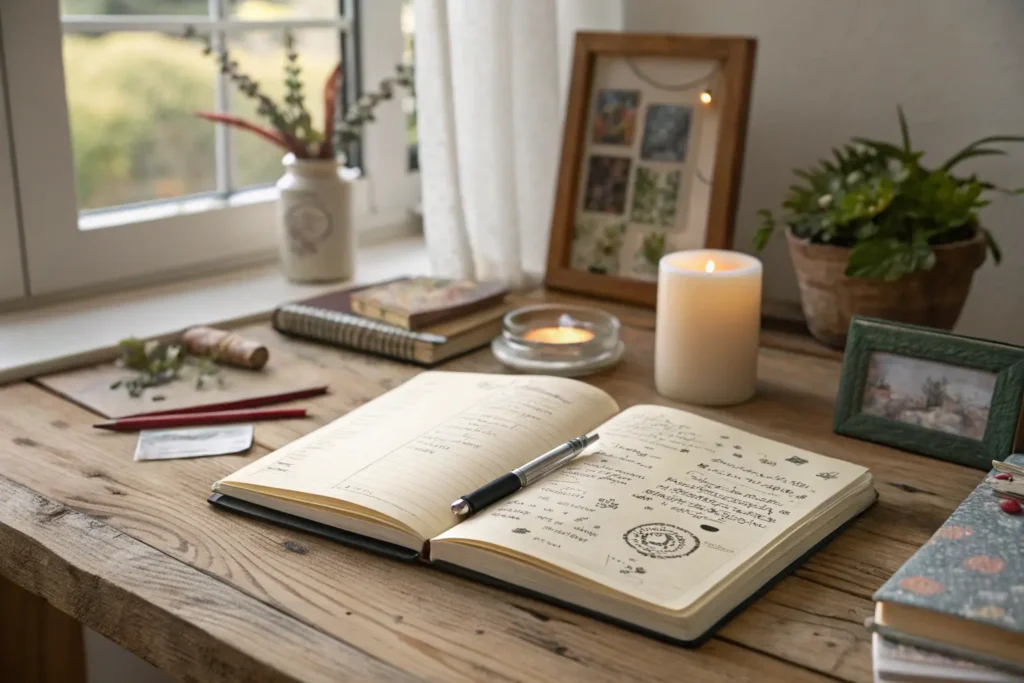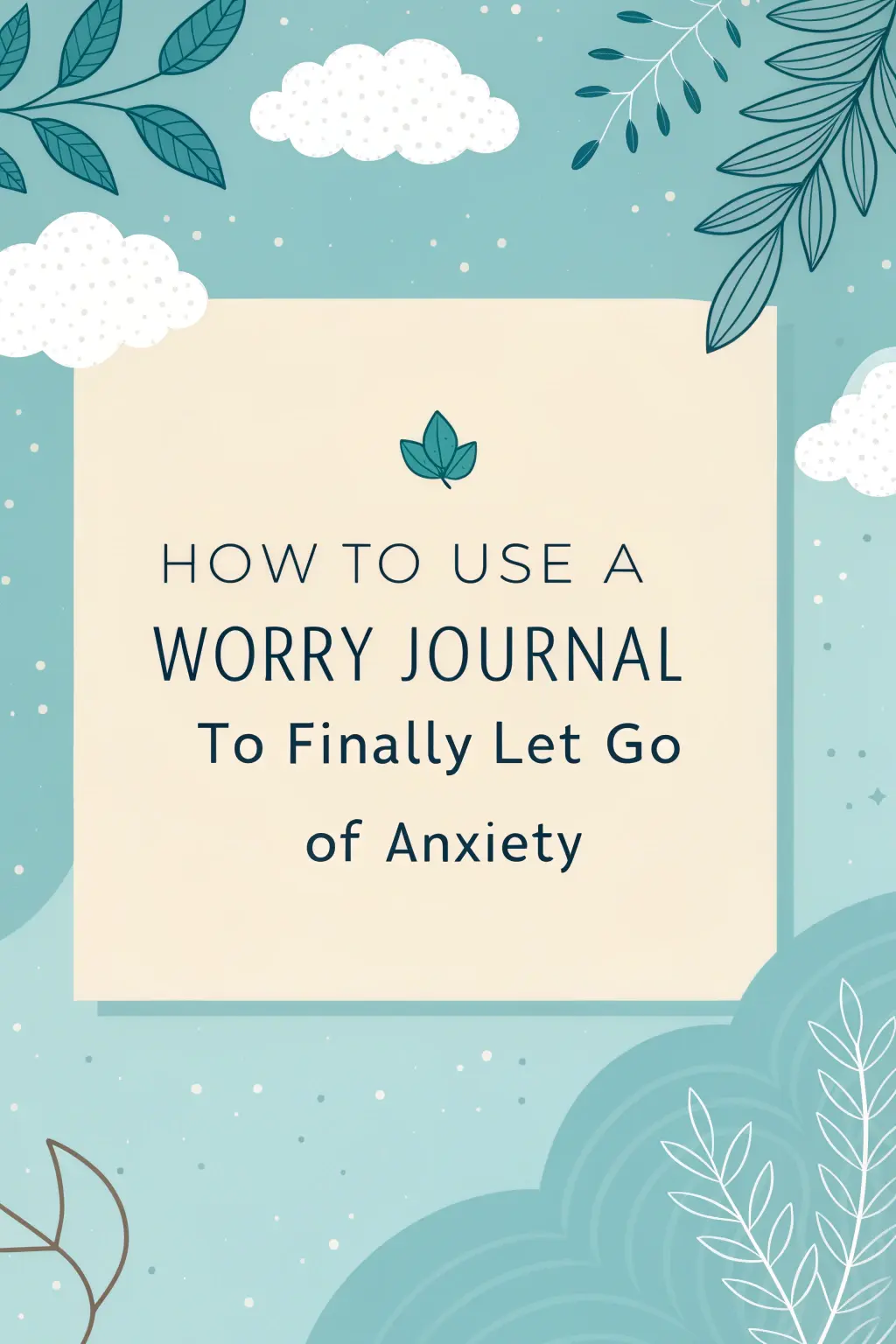If you’ve ever found yourself caught in an endless loop of worrying thoughts, you’re not alone. Anxiety affects millions of people worldwide, often manifesting as persistent worry that feels impossible to escape. While there are many strategies to manage anxiety, one surprisingly effective tool is both simple and accessible: a worry journal.
This powerful technique can help you transform overwhelming anxious thoughts into manageable, actionable insights. By putting your worries on paper, you create space between yourself and your anxiety, allowing you to approach your concerns with clarity and purpose.
Table of Contents
Understanding the Psychology Behind Worry Journaling
When we worry, our thoughts often spiral in repetitive cycles, creating a mental hamster wheel that exhausts us without providing solutions. Worry journaling works by interrupting this cycle through several psychological mechanisms:
Externalization: Writing moves worries from your internal mental space to an external format, creating psychological distance from anxious thoughts.
Cognitive Processing: The act of writing engages different parts of your brain than thinking alone, allowing for more structured and rational evaluation of concerns.
Pattern Recognition: Regular journaling helps identify recurring themes, triggers, and thought patterns that fuel anxiety.
Emotional Regulation: Writing about emotions has been shown to reduce their intensity and help process difficult feelings more effectively.
Problem-Solving Activation: Once worries are written down, your brain naturally begins to shift toward solution-focused thinking rather than rumination.

The Science-Backed Benefits of Worry Journaling
Research consistently supports the effectiveness of expressive writing for mental health. Studies have shown that worry journaling can:
- Reduce symptoms of anxiety and depression
- Improve sleep quality by clearing mental clutter before bedtime
- Decrease physical symptoms of stress like headaches and muscle tension
- Enhance immune function through stress reduction
- Improve emotional regulation and self-awareness
- Increase feelings of control over challenging situations
Setting Up Your Worry Journal
Choosing Your Format
Physical Journal: Many people prefer the tactile experience of writing by hand. Choose a notebook that feels comfortable and inviting to use.
Digital Options: Apps, word processors, or note-taking software can work well, especially if you prefer typing or want to journal on-the-go.
Hybrid Approach: Some find success using both methods – digital for quick entries and physical for deeper reflection sessions.
Creating the Right Environment
Find a quiet, comfortable space where you can write without interruption. This might be a cozy corner of your bedroom, a peaceful spot in your garden, or even a favorite coffee shop. The key is consistency – try to use the same space regularly to build a strong habit.
Timing Your Sessions
Morning Pages: Some prefer to journal first thing in the morning to clear mental clutter and set intentions for the day.
Evening Reflection: Others find it helpful to write before bed, processing the day’s worries and preparing for restful sleep.
Worry Time: Schedule specific “worry time” during the day when you can focus entirely on your concerns through journaling.
The Worry Journal Method: Step-by-Step
Step 1: The Brain Dump
Begin each session by writing down everything that’s worrying you. Don’t edit, organize, or judge – simply let the thoughts flow onto the page. This initial dump helps clear mental space and prevents you from forgetting important concerns.
Set a timer for 10-15 minutes and write continuously. If you run out of worries, write about that feeling or describe your physical sensations in the moment.
Step 2: Categorize Your Worries
Once you’ve emptied your mind, review what you’ve written and categorize each worry into one of three groups:
Actionable Worries: Things you can directly influence or control Uncontrollable Worries: Situations beyond your direct influence Hypothetical Worries: “What if” scenarios that may never happen
This categorization helps you focus energy where it can be most effective.
Step 3: Address Actionable Worries
For each actionable worry, write:
- One specific step you can take today
- A timeline for addressing the issue
- Resources or support you might need
- How you’ll measure progress
This transforms abstract anxiety into concrete action plans.
Step 4: Challenge Uncontrollable Worries
For worries beyond your control, practice these techniques:
Acceptance Writing: Write about accepting the uncertainty and focusing on what you can control instead.
Perspective Shifting: Explore different ways to view the situation, including potential positive outcomes.
Coping Strategies: List ways you can support yourself regardless of how the situation unfolds.
Step 5: Reality-Check Hypothetical Worries
For “what if” scenarios, ask yourself:
- How likely is this outcome, realistically?
- What evidence supports or contradicts this worry?
- How would I cope if this did happen?
- What would I tell a friend facing this same worry?

Advanced Worry Journaling Techniques
The Worry Tree Method
Create a visual flowchart in your journal:
- Write the worry at the top
- Ask: “Can I do something about this?”
- If yes, branch to “What can I do?” and “When will I do it?”
- If no, branch to “Let it go” and focus on acceptance
The 3-3-3 Technique
When anxiety peaks, write down:
- 3 things you can see
- 3 sounds you can hear
- 3 parts of your body you can feel
This grounding technique helps return you to the present moment.
Gratitude Integration
End each worry session by writing three things you’re grateful for. This helps shift your brain from anxiety mode to appreciation mode.
The Worry Postponement Method
Throughout the day, when worries arise, jot them down briefly and tell yourself you’ll address them during your designated worry time. This prevents anxiety from hijacking your entire day.
Common Journaling Prompts for Anxiety
Use these prompts to guide your writing when you’re feeling stuck:
- “What is my biggest worry right now, and what would happen if it came true?”
- “What evidence do I have for and against this worry?”
- “How has worrying about this helped or hurt me?”
- “What would I tell my best friend if they had this worry?”
- “What small step can I take today to address this concern?”
- “How do I want to feel instead of anxious?”
- “What am I learning about myself through this worry?”
Tracking Your Progress
Create a simple tracking system to monitor your anxiety levels and identify patterns:
Daily Ratings: Rate your anxiety level from 1-10 before and after journaling.
Worry Themes: Note recurring categories of worries to identify patterns.
Trigger Identification: Record what situations or thoughts tend to increase anxiety.
Success Stories: Document times when journaling helped you work through worries effectively.
Overcoming Common Obstacles
“I Don’t Have Time”
Start with just 5 minutes a day. Even brief sessions can be effective. Consider voice-to-text options if writing feels too time-consuming.
“My Worries Feel Too Big”
Break large worries into smaller, more manageable pieces. Focus on one aspect at a time rather than trying to solve everything at once.
“I Keep Worrying About the Same Things”
Repetitive worries are normal. Each time you write about the same concern, you’re processing it more deeply and potentially discovering new insights.
“Writing Makes Me More Anxious”
If journaling initially increases anxiety, this is often temporary. Start with shorter sessions and focus on the brain dump phase before moving to analysis.
When to Seek Additional Support
While worry journaling is a powerful tool, it’s not a replacement for professional help when needed. Consider seeking support from a mental health professional if:
- Your anxiety significantly interferes with daily life
- You experience panic attacks or physical symptoms
- You have thoughts of self-harm
- Your worries feel completely overwhelming despite consistent journaling
- You’d benefit from learning additional coping strategies
Building a Sustainable Practice
Start Small
Begin with just 5-10 minutes of journaling every few days. Consistency matters more than duration.
Be Patient with Yourself
Worry journaling is a skill that improves with practice. Don’t expect immediate perfection or complete anxiety relief.
Experiment with Different Approaches
Try various techniques and formats to find what works best for you. Your practice may evolve over time.
Celebrate Small Wins
Acknowledge when journaling helps you feel even slightly better or provides a moment of clarity.
The Long-Term Impact
Regular worry journaling can create lasting changes in how you relate to anxiety. Over time, you may notice:
- Increased self-awareness about your thought patterns
- Greater confidence in your ability to handle challenges
- Improved problem-solving skills
- Enhanced emotional regulation
- A stronger sense of control over your mental state
Conclusion
A worry journal is more than just a place to write down anxious thoughts – it’s a powerful tool for transformation. By creating a structured space to examine, categorize, and address your worries, you’re taking an active role in managing your anxiety rather than being controlled by it.
Remember that learning to let go of anxiety is a process, not a destination. Some days will be easier than others, and that’s completely normal. The key is consistency and self-compassion as you develop this practice.
Your worry journal can become a trusted companion in your journey toward greater peace and emotional well-being. It’s a place where anxious thoughts can be transformed into insights, where overwhelming feelings can be processed and released, and where you can discover your own strength and resilience.
Start today with just a few minutes and a single worry. Write it down, examine it, and take the first step toward finally letting go of anxiety. Your future, calmer self will thank you for taking this important step toward mental wellness.





